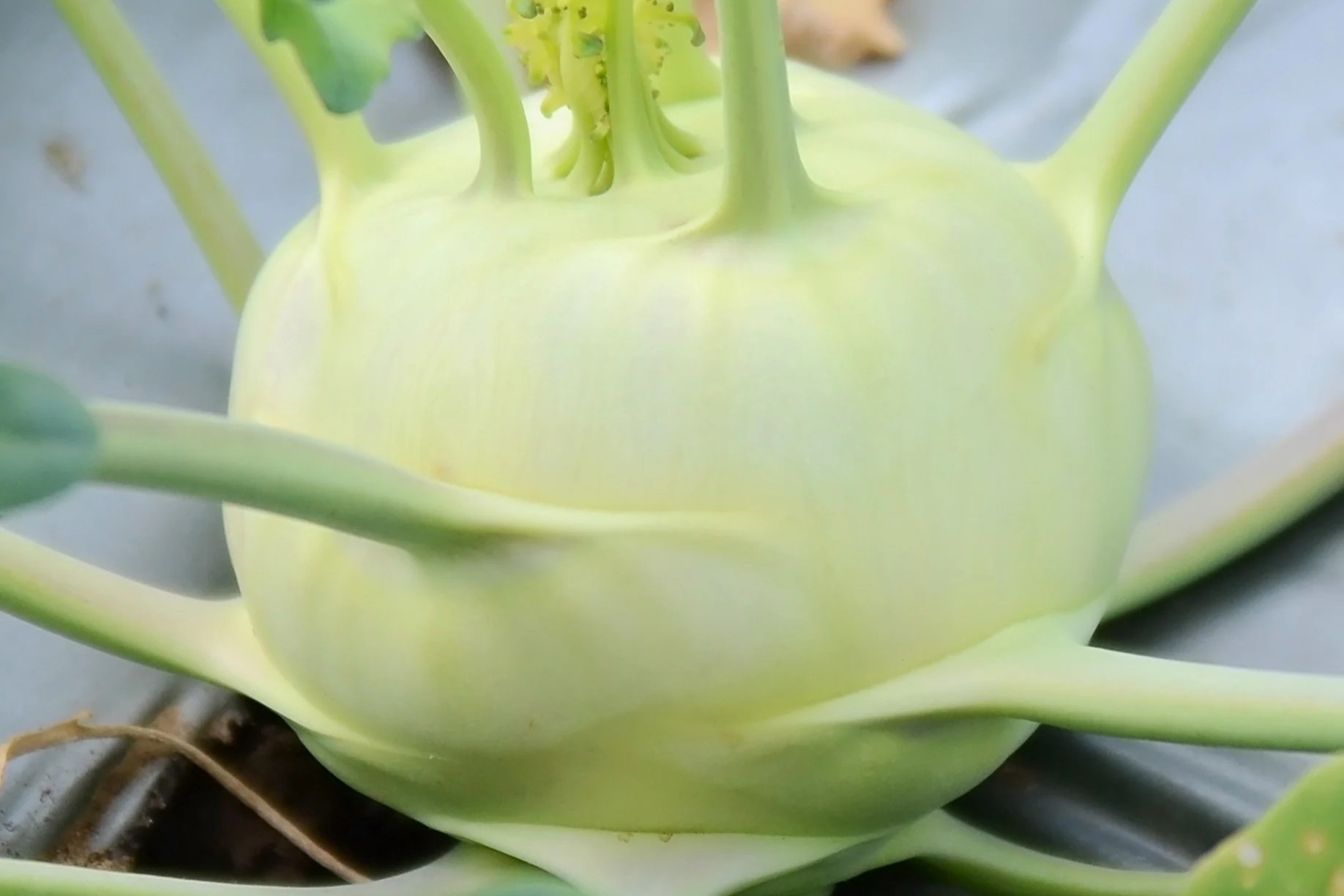
What makes white kohlrabi a unique addition to your diet? White kohlrabi, often overlooked, packs a punch with its crisp texture and mild, slightly sweet flavor. This versatile veggie belongs to the cabbage family and can be enjoyed raw or cooked. Rich in vitamins C and B6, potassium, and fiber, it supports immune health, aids digestion, and boosts energy. Its low-calorie content makes it perfect for weight management. Whether you slice it into salads, roast it, or stir-fry it, white kohlrabi adds a delightful crunch and nutritional boost to any meal. Ready to learn more about this underappreciated gem? Let's dive in!
Key Takeaways:
- White kohlrabi, a European veggie, is low in calories, high in fiber, and rich in antioxidants. It's great for digestion, immune support, and heart health. Plus, it's easy to grow in your garden!
- With its mild flavor, white kohlrabi can be enjoyed raw, roasted, mashed, stir-fried, or in soups. It's a versatile and nutritious addition to your meals, offering digestive, immune, and heart health benefits.
What is White Kohlrabi?
White kohlrabi, a member of the cabbage family, is a versatile vegetable known for its crisp texture and mild flavor. Often overlooked, this bulbous veggie deserves a spot in your kitchen. Here are some fascinating facts about white kohlrabi.
-
Origin: White kohlrabi originated in Europe and has been cultivated since the 16th century. Its name comes from the German words "kohl" (cabbage) and "rabi" (turnip).
-
Appearance: This vegetable looks like a turnip but grows above ground. It has a pale green or white bulb with long, leafy stems.
-
Nutritional Value: Packed with vitamins and minerals, white kohlrabi is an excellent source of vitamin C, potassium, and fiber.
-
Low in Calories: One cup of chopped kohlrabi contains only about 36 calories, making it a great choice for those watching their weight.
-
Rich in Antioxidants: This veggie is loaded with antioxidants, which help protect your cells from damage and reduce inflammation.
How to Grow White Kohlrabi
Growing white kohlrabi in your garden is easier than you might think. With the right conditions, you can enjoy fresh, homegrown kohlrabi.
-
Cool-Weather Crop: White kohlrabi thrives in cooler temperatures, making it perfect for spring and fall planting.
-
Soil Requirements: It prefers well-drained, fertile soil with a pH between 6.0 and 7.5.
-
Spacing: Plant seeds about 1/4 inch deep and space them 6-8 inches apart to give each plant room to grow.
-
Watering: Keep the soil consistently moist but not waterlogged. Overwatering can lead to root rot.
-
Harvest Time: White kohlrabi is ready to harvest when the bulbs are 2-3 inches in diameter, usually about 55-60 days after planting.
Culinary Uses of White Kohlrabi
White kohlrabi's mild, slightly sweet flavor makes it a versatile ingredient in many dishes. Here are some ways to incorporate it into your meals.
-
Raw: Enjoy it raw by slicing it thinly and adding it to salads or slaws for a crunchy texture.
-
Roasted: Roast kohlrabi with olive oil, salt, and pepper for a delicious side dish.
-
Mashed: Boil and mash kohlrabi with butter and cream for a unique twist on mashed potatoes.
-
Stir-Fried: Add it to stir-fries for a crunchy, nutritious addition.
-
Soup: Use kohlrabi in soups and stews for added flavor and texture.
Health Benefits of White Kohlrabi
Incorporating white kohlrabi into your diet can offer numerous health benefits. Here are some reasons to eat more of this nutritious vegetable.
-
Digestive Health: The high fiber content in kohlrabi promotes healthy digestion and can help prevent constipation.
-
Immune Support: Rich in vitamin C, kohlrabi can boost your immune system and help your body fight off infections.
-
Heart Health: Potassium in kohlrabi helps regulate blood pressure and supports overall heart health.
-
Weight Management: Low in calories and high in fiber, kohlrabi can help you feel full longer, aiding in weight management.
-
Bone Health: The calcium and magnesium in kohlrabi contribute to strong bones and may help prevent osteoporosis.
The Final Bite
White kohlrabi isn't just another veggie. It's packed with nutrients, versatile in the kitchen, and has a rich history. From boosting your immune system to aiding digestion, this humble plant offers a lot. Whether you enjoy it raw, roasted, or in a salad, there's no shortage of ways to incorporate it into your diet.
Farmers markets and grocery stores often have fresh kohlrabi, so it's easy to find. Plus, it's simple to grow in your own garden. With its unique taste and numerous health benefits, white kohlrabi deserves a spot on your plate.
Next time you're looking for something new to try, give white kohlrabi a chance. You might just find your new favorite veggie. Happy eating!
Frequently Asked Questions
Was this page helpful?
Our commitment to delivering trustworthy and engaging content is at the heart of what we do. Each fact on our site is contributed by real users like you, bringing a wealth of diverse insights and information. To ensure the highest standards of accuracy and reliability, our dedicated editors meticulously review each submission. This process guarantees that the facts we share are not only fascinating but also credible. Trust in our commitment to quality and authenticity as you explore and learn with us.


